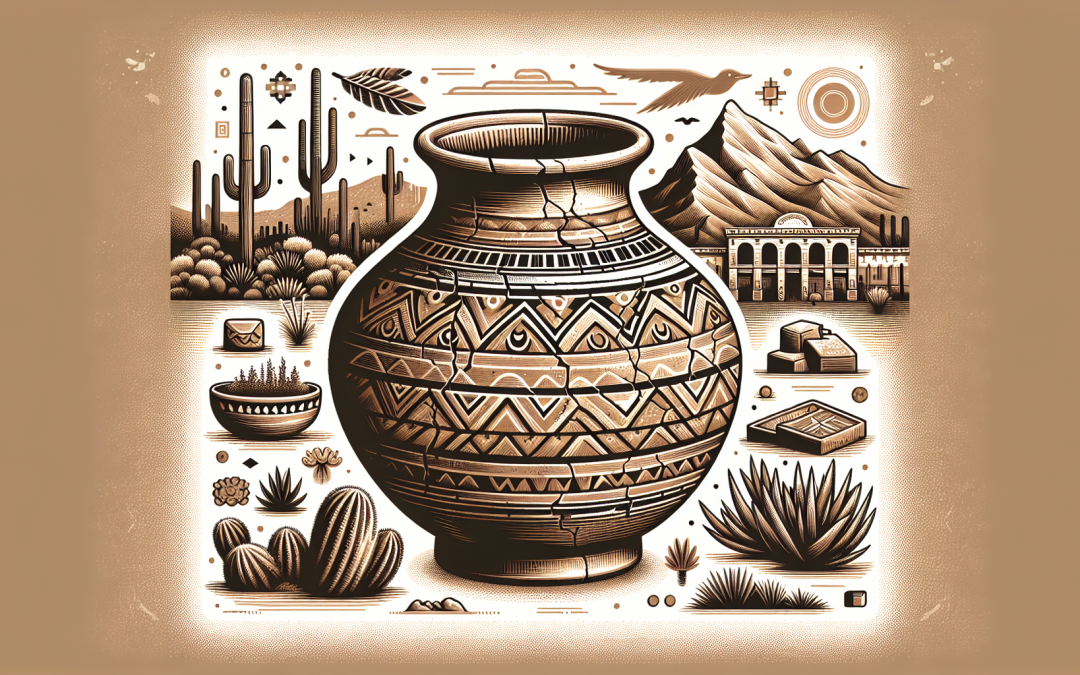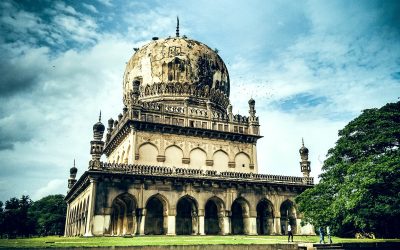So, you’re planning a trip to Tucson and wondering if there are any historic sites worth visiting? Well, you’re in luck! Tucson, a vibrant city nestled in the Sonoran Desert, boasts a rich cultural and historical heritage that makes it a prime destination for history buffs. From ancient Native American ruins to iconic Western landmarks, this city has it all. So get ready to embark on a journey through time as we uncover the hidden historical gems that Tucson has to offer.
Presidio San Agustín del Tucson Museum
Overview
The Presidio San Agustín del Tucson Museum is a historical gem located in Tucson, Arizona. This museum is dedicated to preserving and showcasing the rich history of the city and its surrounding areas. Here, you can immerse yourself in the history of the Presidio, which served as a Spanish fort in the 18th century. Whether you’re a history enthusiast or just curious about the past, the Presidio San Agustín del Tucson Museum is a must-visit destination.
Historical Significance
The Presidio San Agustín del Tucson has immense historical significance. It was first established in 1775 as a Spanish outpost, serving as a military fort and a center for colonial activities. The Presidio played a crucial role in protecting the Spanish settlers from Native American attacks and maintaining control over the region. Over the years, it underwent various transformations and witnessed the changing political dynamics in the Southwest. Today, the museum stands as a testament to the city’s early history and the legacy of the Spanish colonization.
Attractions
Visitors to the Presidio San Agustín del Tucson Museum can explore a range of fascinating attractions. The reconstructed Presidio offers a glimpse into the past, with authentic adobe buildings and interpretive exhibits detailing the daily life of the soldiers and settlers. You can stroll through the courtyards, browse the artifacts on display, and even witness living history demonstrations of traditional crafts and activities. The museum also hosts special events and educational programs throughout the year, providing visitors with a comprehensive understanding of Tucson’s history.
Arizona-Sonora Desert Museum
Overview
The Arizona-Sonora Desert Museum is a unique attraction that combines the elements of a zoo, botanical garden, and natural history museum. Located in Tucson, this expansive desert park offers an immersive experience into the diverse ecosystems of the Sonoran Desert. Whether you’re a nature lover or simply curious about desert landscapes, the Arizona-Sonora Desert Museum is a must-see destination.
Historical Significance
While the Arizona-Sonora Desert Museum does not have a specific historical significance, it provides valuable insights into the natural history of the region. With its focus on the Sonoran Desert, the museum showcases the extraordinary biodiversity of this arid environment and highlights the importance of conservation efforts. By educating visitors about the unique flora and fauna of the desert, the museum emphasizes the need to protect and preserve these delicate ecosystems for future generations.
Attractions
The Arizona-Sonora Desert Museum offers a wide array of attractions for visitors of all ages. Explore the desert trails and encounter native wildlife, including coyotes, javelinas, and various species of birds. Visit the botanical gardens to marvel at the beautiful desert plants, with their unique adaptations to survive in extreme conditions. The museum also boasts a comprehensive collection of exhibits, ranging from geological formations to the cultural history of Native American tribes in the area. For an unforgettable experience, don’t miss the daily animal presentations and live animal encounters, where you can learn more about the incredible creatures that call the Sonoran Desert home.
Mission San Xavier del Bac
Overview
Mission San Xavier del Bac, also known as the “White Dove of the Desert,” is a stunning Spanish Catholic mission located just outside of Tucson. This architectural masterpiece is one of the oldest intact European structures in Arizona and a true cultural treasure. A visit to Mission San Xavier del Bac offers a unique opportunity to admire the beauty of Spanish colonial architecture and learn about the history of Catholic missions in the Southwest.
Historical Significance
Founded in 1692 by Jesuit missionary Father Eusebio Kino, Mission San Xavier del Bac played a significant role in the spread of Christianity among the Native American communities. It served as a place of worship, education, and community for the Tohono O’odham people. The mission was later transferred to the Franciscans in 1768, who initiated an extensive renovation and expansion project that resulted in the masterpiece we see today. Today, Mission San Xavier del Bac stands as a symbol of cultural exchange, resilience, and artistic achievement.
Attractions
The mission’s stunning architecture is its main attraction. The white walls, intricate carvings, and vibrant frescoes create a captivating ambiance that transports visitors back in time. Inside the church, you can admire the beautiful religious artworks and ornate altar, while the exterior offers breathtaking views of the surrounding desert landscape. Guided tours provide in-depth historical and architectural insights, giving visitors a deeper understanding of the mission’s significance. Whether you’re interested in art, history, or spirituality, a visit to Mission San Xavier del Bac is a truly enriching experience.
Barrio Historic District
Overview
The Barrio Historic District is a charming neighborhood in Tucson with a rich cultural and historical heritage. This vibrant district showcases the city’s diverse cultural influences and is a testament to the community’s resilience and creativity. Whether you’re looking to explore colorful murals, enjoy delicious cuisine, or learn about the city’s multicultural history, the Barrio Historic District is a must-visit destination.
Historical Significance
The Barrio Historic District has deep historical significance, primarily as the heart of Tucson’s Mexican-American community. Established in the late 19th century, this neighborhood became home to Mexican and Mexican-American residents, who played a vital role in shaping the cultural fabric of the city. Despite facing challenges and discrimination, the community thrived and created a vibrant neighborhood filled with art, music, and culinary traditions. Today, the Barrio Historic District stands as a representation of Tucson’s multicultural heritage and serves as a hub for cultural celebrations and events.
Attractions
Exploring the Barrio Historic District is a feast for the senses. Wander through the streets and admire the vibrant murals that depict the neighborhood’s history and culture. Discover local artisan shops, where you can find unique handmade crafts and artworks. Sample authentic Mexican cuisine at the neighborhood’s numerous restaurants and food stalls, experiencing the flavors that have been passed down through generations. Don’t forget to look out for local events and festivals, which showcase traditional music, dance, and other cultural performances. A visit to the Barrio Historic District is a truly immersive experience in Tucson’s diverse heritage.
Pima Air & Space Museum
Overview
For aviation enthusiasts and history buffs, the Pima Air & Space Museum in Tucson is a must-visit destination. With its extensive collection of aircraft and related artifacts, this museum offers a fascinating journey through the history of aviation. Whether you have a deep passion for planes or simply want to learn more about the evolution of flight, the Pima Air & Space Museum has something for everyone.
Historical Significance
The Pima Air & Space Museum holds significant historical value by preserving and showcasing the advancements of aviation technology. It houses one of the world’s largest collections of aircraft, with over 350 unique and historic planes on display. The museum’s collection spans from early experimental aircraft to modern military jets, providing a comprehensive timeline of aviation history. By exploring the exhibits, visitors can gain a deeper appreciation for the pioneers of flight and the incredible achievements in aerospace engineering.
Attractions
Visiting the Pima Air & Space Museum allows you to get up close and personal with a wide range of aircraft. You can explore the outdoor display of diverse airplanes, helicopters, and even space vehicles. Inside the museum’s hangars, you’ll find fascinating exhibits on topics such as World War II aviation, space exploration, and the famous “Boneyard.” The museum also offers guided tours, allowing you to learn from knowledgeable docents who share intriguing stories and insights about the aircraft. For those seeking a hands-on experience, the museum even offers opportunities to sit in the cockpit of select planes or take a tram tour of the nearby Aerospace Maintenance and Regeneration Group facility, commonly known as the “Boneyard.” With its vast collection and engaging exhibits, the Pima Air & Space Museum promises an unforgettable experience for aviation enthusiasts and curious visitors alike.
Old Tucson
Overview
Old Tucson is a living history attraction that takes visitors back in time to the Wild West era. Located just west of Tucson, this unique destination captures the spirit of the Old West through its authentic Western-style buildings, live performances, and thrilling attractions. Whether you’re a fan of Western films or simply intrigued by the rugged charm of the Wild West, Old Tucson offers a memorable experience for visitors of all ages.
Historical Significance
While Old Tucson is not an actual town from the past, it holds immense historical significance as a representation of the Western frontier during the late 19th and early 20th centuries. The attraction is built on the site of the original Old Tucson Studios, where numerous iconic Western movies and TV shows were filmed. The sprawling movie set became a symbol of the Wild West in popular culture and played a significant role in shaping public perceptions of the era. Today, Old Tucson serves as a tribute to the Western film industry and the nostalgia associated with the Old West.
Attractions
Old Tucson offers a wide range of attractions and activities that allow visitors to immerse themselves in the Wild West experience. Explore the meticulously recreated Western town, complete with saloons, general stores, and jailhouses. Catch live performances, including gunfights and stunt shows, that bring the Old West to life. Enjoy family-friendly rides, such as stagecoach rides and train rides, that showcase the rugged beauty of the surrounding desert landscape. The attraction also hosts special events throughout the year, including Western-themed festivals and holiday celebrations. Whether you’re interested in history, entertainment, or simply enjoying the ambiance of a Western town, a trip to Old Tucson is sure to transport you to a bygone era.
Tucson Museum of Art and Historic Block
Overview
The Tucson Museum of Art and Historic Block is a cultural oasis nestled in the heart of downtown Tucson. This museum is dedicated to preserving and showcasing the art, history, and culture of the Southwest. Featuring a diverse collection of artworks from different periods and artists, the museum offers a captivating journey through the region’s artistic heritage.
Historical Significance
The Tucson Museum of Art and Historic Block holds historical significance as a guardian of the area’s cultural heritage. The museum sits on the site of the historic homes known as the La Casa Cordova and the Stevens/Duffield House, which date back to the 19th century. These buildings are part of the museum’s Historic Block and provide a glimpse into Tucson’s architectural past. The museum’s collection of artworks also reflects the cultural diversity of the Southwest, with pieces from Native American, Hispanic, and Western artists. By presenting these artworks, the museum aims to foster a deeper understanding and appreciation of the region’s history and artistic traditions.
Attractions
A visit to the Tucson Museum of Art and Historic Block promises a visually stunning and intellectually enriching experience. Explore the museum’s diverse exhibitions, which encompass both traditional and contemporary artworks. Admire the paintings, sculptures, and ceramics that celebrate the beauty of the Southwest and its people. The museum also offers special exhibitions that highlight specific artists, art movements, or themes. Make sure to wander through the Historic Block, where you can tour the restored historic homes and appreciate the architectural charm of the past. The museum frequently hosts lectures, workshops, and live performances that further enhance the visitor experience. Whether you’re an art enthusiast, a history lover, or simply seeking inspiration, the Tucson Museum of Art and Historic Block is a treasure trove of cultural delights.
Catalina State Park
Overview
Catalina State Park is a natural paradise located in the Santa Catalina Mountains, just north of Tucson. This beautiful park offers a wide range of outdoor activities and breathtaking scenery that allow visitors to reconnect with nature. Whether you’re looking for a peaceful hike, a scenic picnic spot, or a place to observe wildlife, Catalina State Park has it all.
Historical Significance
While Catalina State Park does not have a specific historical significance, the area holds cultural and archaeological importance. The park is situated within the traditional lands of the Native American communities, particularly the Hohokam and O’odham tribes. These tribes have a rich history rooted in the region and have left behind traces of their existence, such as ancient petroglyphs and ruins. By preserving the natural beauty of the Santa Catalina Mountains, Catalina State Park contributes to the appreciation and understanding of the indigenous cultures that once thrived in the area.
Attractions
Catalina State Park offers a plethora of attractions and activities that cater to outdoor enthusiasts. Explore the extensive network of trails, ranging from easy strolls to challenging hikes, that take you through scenic desert landscapes, lush canyons, and majestic mountain vistas. Marvel at the diverse flora and fauna that call the park home, including hummingbirds, desert tortoises, and towering saguaro cacti. Picnic areas throughout the park provide a perfect spot to relax and enjoy the peaceful surroundings. If you’re interested in history, take a guided tour or participate in archaeological programs to learn more about the cultures that once inhabited the area. With its pristine natural beauty and abundant recreational opportunities, Catalina State Park is a slice of paradise for outdoor enthusiasts and nature lovers.
Tumacácori National Historical Park
Overview
Tumacácori National Historical Park is a captivating destination that combines natural beauty with cultural heritage. Situated at the meeting point of the Santa Cruz River and the Mexico-Arizona border, this park offers a glimpse into the history of mission communities in the Southwest. From historical structures to serene walking paths, Tumacácori National Historical Park invites visitors to explore the region’s past and appreciate its natural wonders.
Historical Significance
Tumacácori National Historical Park holds immense historical significance as the site of three Spanish colonial missions: Tumacácori, Calabazas, and Guevavi. These missions were established in the late 17th and early 18th centuries with the aim of spreading Christianity among the indigenous populations. The park showcases the architectural remnants of these missions, including the iconic Tumacácori Mission church. Additionally, the park preserves and interprets the cultural exchanges that occurred between the Spanish colonizers and the Native American tribes, providing a deeper understanding of the region’s complex history.
Attractions
Walking through Tumacácori National Historical Park is like stepping back in time. Explore the ruins of the ancient missions and marvel at the intricate stonework and architectural details that have withstood the test of time. The park offers self-guided tours, allowing visitors to discover the missions at their own pace while providing informative signage along the way. You can also explore the park’s scenic trails, which wind along the Santa Cruz River and offer opportunities for birdwatching and peaceful contemplation. The on-site museum provides further context and insights into the park’s historical and cultural significance. Throughout the year, the park hosts special events, such as traditional music performances and living history demonstrations, which add to the immersive experience. A visit to Tumacácori National Historical Park is a wonderful opportunity to connect with centuries-old history and enjoy the tranquil beauty of the landscape.
Racing Hall of Fame at Tucson Greyhound Park
Overview
The Racing Hall of Fame at Tucson Greyhound Park is a one-of-a-kind attraction for racing enthusiasts and history lovers alike. Located in Tucson, this museum pays homage to the sport of greyhound racing and celebrates the achievements of both human and canine athletes. Whether you’re a fan of the sport or simply interested in its history, the Racing Hall of Fame provides a fascinating glimpse into the world of greyhound racing.
Historical Significance
The Racing Hall of Fame at Tucson Greyhound Park holds historical significance as a repository of the sport’s rich heritage. Greyhound racing has a long history in Tucson, with the Tucson Greyhound Park operating as one of the premier racing venues in the United States for many decades. The museum showcases the evolution of the sport, from its early beginnings to its heyday in the mid-20th century. It also honors the legendary greyhounds and talented trainers who have left their mark on the racing world. By preserving and sharing this history, the Racing Hall of Fame at Tucson Greyhound Park ensures that the legacy of greyhound racing continues to be remembered and celebrated.
Attractions
The Racing Hall of Fame offers an array of attractions and exhibits that shed light on the world of greyhound racing. Explore the interactive displays, which allow visitors to learn about the dogs’ training, racing strategies, and the behind-the-scenes operations of a racing track. Admire the trophies, photographs, and memorabilia that highlight the achievements of iconic greyhounds and notable figures in the sport. Visitors can also enjoy live greyhound racing events at the Tucson Greyhound Park, experiencing the thrill of the sport firsthand. Whether you’re a seasoned racing enthusiast or a curious visitor, the Racing Hall of Fame at Tucson Greyhound Park provides a unique and educational experience that captures the excitement and history of greyhound racing.
In conclusion, Tucson is a city rich in history and culture, with a multitude of historic sites and attractions that offer a unique glimpse into the past. From the Presidio San Agustín del Tucson Museum and Mission San Xavier del Bac to the Barrio Historic District and the Racing Hall of Fame at Tucson Greyhound Park, there is something for everyone to explore and enjoy in this vibrant city. Whether you’re interested in art, history, nature, or sporting heritage, Tucson has it all. So, pack your bags and embark on a journey through time and discover the fascinating historical sites awaiting you in Tucson, Arizona.










